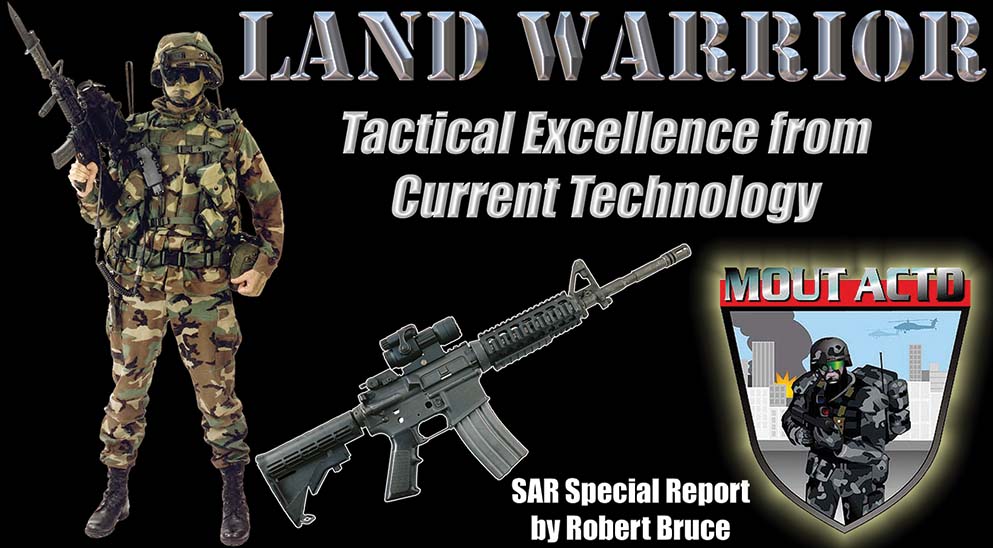by Robert Bruce
SMALL ARMS REVIEW magazine is proud to present LAND WARRIOR, the first of a three-part series on the evolution of the American infantry soldier in the 21st Century.
Sergeant Petree’s comments were not made lightly. He and some fellow paratroopers of the Army’s tough and highly trained “All American Division” were taking part in more field-testing of the LAND WARRIOR concept. Rigged up in high-tech gear including body armor fitted with a small computer, helmet with two-way radio and tiny monitor, plus night vision equipment linked to his M4 carbine, the sergeant and his squad were apparently impressed by how much better they were able to move, communicate and shoot in a series of typical infantry missions.
LAND WARRIOR is the first of three phases in programs underway in the US military to make damn sure the American fighting man will be able to dominate any potential enemy soldier for the next twenty years. LW will be followed by OBJECTIVE FORCE WARRIOR in 2010 and then FUTURE WARRIOR in 2020. Each step will take advantage of existing and emerging technologies to continually upgrade his lethality, survivability and multi-mission effectiveness against any threat, day and night, on any terrain and in all weather conditions.
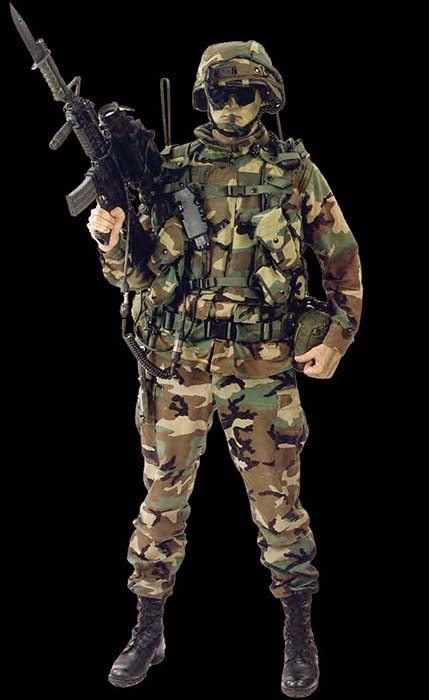
This is already a formidable task at a time when even the smallest and poorest nations have easy access to chemical, biological and laser weapons, cheap and plentiful night vision equipment, as well as increasingly lethal conventional arms and munitions. We are up against adversaries with no regard for human life – theirs or others – who don’t hesitate to mount suicide attacks and who cynically use innocent civilians as shields. America’s infantrymen are fighting in this world right now with no end in sight and in full view of television news organizations that seek to sensationalize every misstep.
The United States has a clear technological edge built into our ships, aircraft and fighting vehicles that enables an astonishing degree of coordination and precision in target engagement. The Digital Battlefield is a reality today with networked tactical computers; secure multi-channel communication, exact navigation with Global Positioning satellites, sensor systems unlimited by darkness, clouds or smoke, and “smart” munitions that need no human guidance.
But these advantages are not fully available to the Grunt on the ground; the foot soldier who must operate with only what he can carry. Sure, there are “manportable” versions of all this whiz-bang hardware but no way in hell can one GI hump it all. Until now….
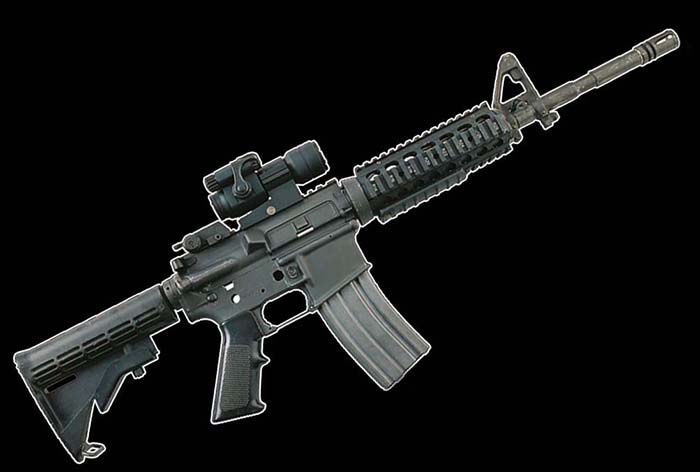
The Five-Fingered Fist
The LAND WARRIOR (LW) system is five major components that work together to make one super soldier. Since personally putting holes in bad guys is perhaps the most elemental infantry task, let’s start with a look at the weapon subsystem.
Right now the main “lethality component” is a 5.56x45mm M4 Modular Weapon System, a chopped M16 with wrap-around mounting rails. These allow an almost endless variety of accessories to be clamped on including an underslung 40mm M203 grenade launcher. So far this is pretty conventional as all this stuff has been around for thirty years since the Vietnam War.
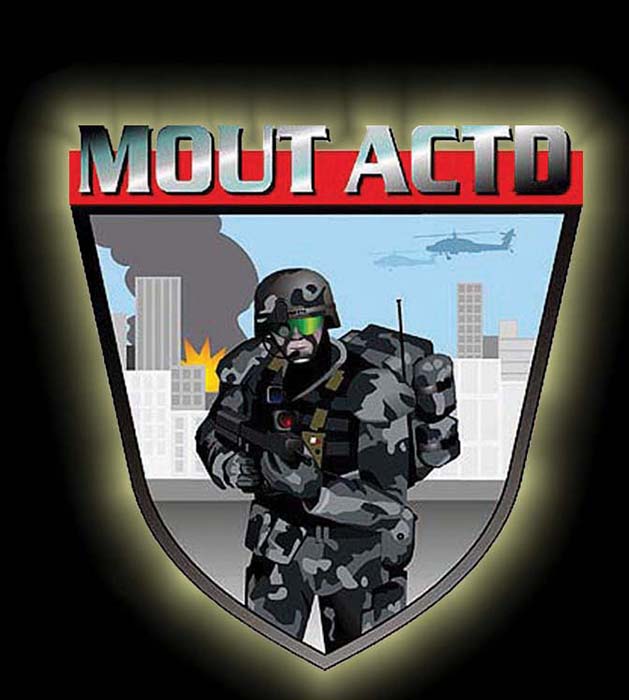
But then you start adding some electronics and things get really interesting. A Multifunction Laser combines functions from six separate devices to provide range and direction finding, aiming light, IR illuminator, bore scope, combat interrogator, and MILES trainer. Then, a Thermal Sight and a Day Video Sight provide 24-hour, all-weather target identification and engagement, cleverly feeding into LW’s helmet display monitor.
This last is the often-misunderstood “shoot-around-corners” capability. No, the rifle doesn’t fire curveball ammunition; the soldier can stay behind cover while lifting the weapon overhead or around a corner for a look-see through the helmet sight. If the enemy is close enough and standing still, it is theoretically possible to whack him one-handed.
Now, for many reasons the M4 is not an ideal weapon and recent experience in Afghanistan has intensified criticism. LW’s lethality will be significantly upgraded in the next few years with fielding of the OICW – Objective Individual Combat Weapon – a combination assault carbine and semiautomatic grenade launcher firing “smart” 20mm airburst projectiles. We’ll look much closer at this exciting weapon in next month’s feature.
But maybe soldiers won’t have to wait that long to get a better carbine. Uncle Sam has just given ATK, the OICW’s lead contractor, about $5 million to detach that weapon’s “kinetic energy” component for use as LW’s baseline weapon. This should be no sweat because it’s a modified 5.56x45mm HK G36, one of the best assault rifles of recent times with an increasingly favorable combat reputation.

Triple Threat
The next three subsystems – helmet, computer and software – are so closely integrated that we’ll examine them together. The computer is modularized for efficient placement on the soldier’s body and hardened against the rigors of combat. It rolls up several functions including navigation plus secure voice and digital radio communication. It works with the weapon-mounted laser to automate indirect fire support requests. A small hand-held flat panel display provides better resolution for digital maps.
Its current software provides a common tactical picture including location of friendly and enemy forces, video image capture and transmission, graphics, and system status reports such as battery reserve. Capabilities can be changed, upgraded, or added with ease as technology evolves.
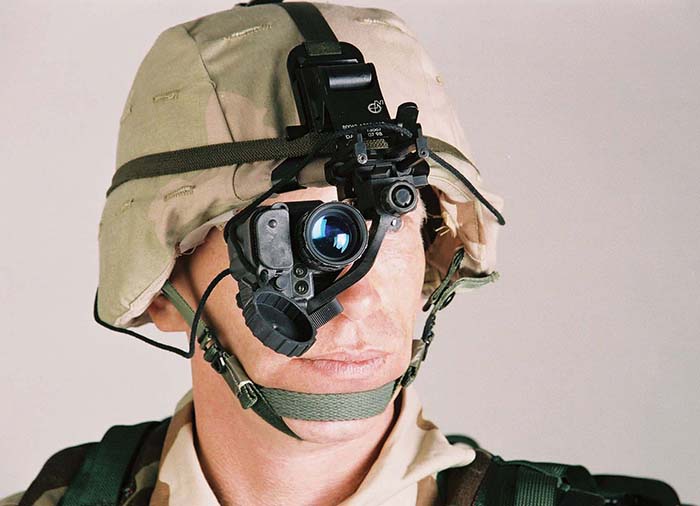
The Integrated Helmet is the third leg of this tripod, bringing information from the weapon and computer right to LW’s eyes and ears. Familiar lines of the current PASGT Kevlar helmet are maintained, but cut a bit shorter in the neck area so it won’t wedge against the high collar of the new body armor. Hard points are built in to allow sturdy attachment of the color display mini-monitor, radio mike and headphones, and a PVS-14 night vision monocular.
Body Armor
Point Blank’s excellent INTERCEPTOR body armor is the basis for LW’s enhanced ballistic protection. The basic outer vest weighs a relatively modest 8.5 pounds and will stop 7.62x51mm ball rounds with the addition of “chicken plates” front and back, weighing 4 pounds each. Sturdy nylon straps are sewn all over for customized attachment of computer-related modules and all sorts of gear from magazine pouches to water bladders.
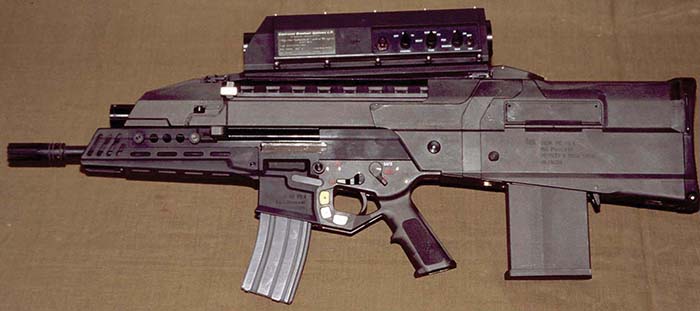
The new MOLLE rucksack works well with all this and removable compartments are used to tailor it to situation and mission. Quick-release shoulder straps let LW drop it instantly if needed.
Current chemical warfare protective masks and suits are said to be compatible. However, anybody who has had to stay inside this stuff for a couple of hours knows that it’s bad enough by itself – let alone when worn with all that other LW gear.
Coming Soon
RDT&E (Research, Development, Testing and Engineering) is effectively completed and the Army is scheduled to begin fielding the first of some 34,000 LW systems in fiscal year 2005. Insiders say that it is likely this will be accelerated in view of the situation in Iraq. Meanwhile, defense giant General Dynamics has recently gotten almost $60 million to enhance LW’s capabilities as a key component of the highly digitized and integrated Stryker Brigade Combat Team.
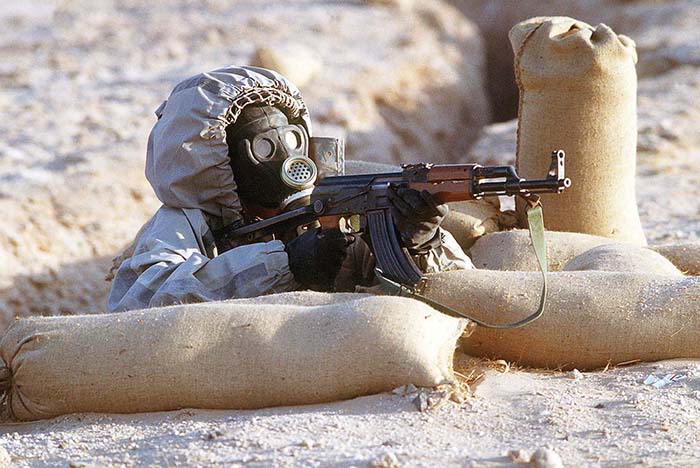
LAND WARRIOR on the Web: www.tradoc.army.mil/pao/landwarrior.htm Next Month Improvements to LAND WARRIOR and exciting new technological advances will lead to the Army’s next program, OBJECTIVE FORCE WARRIOR. Read about how scientists expect to solve problems with fighting in extreme heat and cold, chemical warfare, protection against directed energy weapons, and how to increase the lethality of hand-held weapons.
| This article first appeared in Small Arms Review V7N8 (May 2004) |



